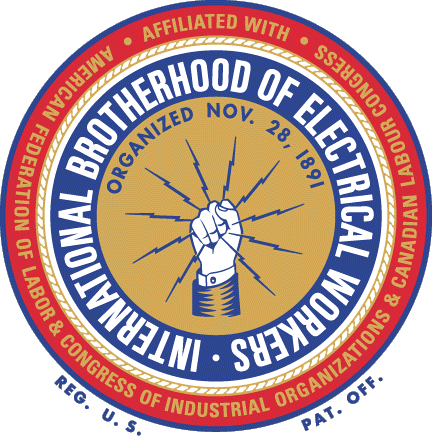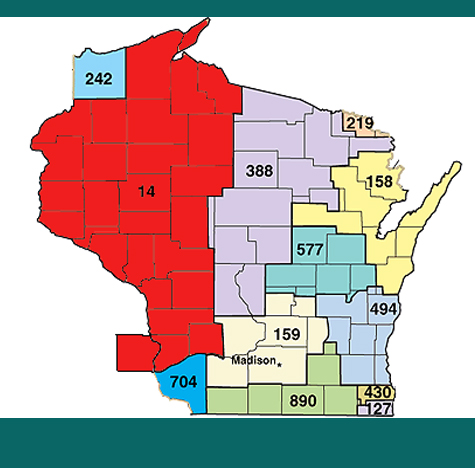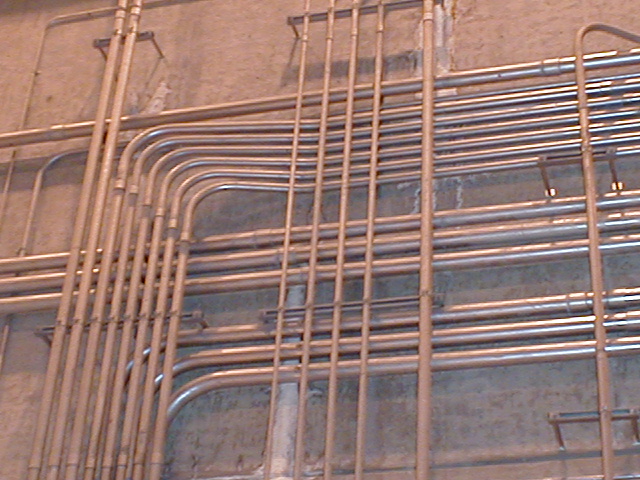| Mission Statement |
|
The Mission of IBEW Local 14 is:
To organize workers throughout the electrical industry.
To secure full employment and promote reasonable methods and hours of work.
To cultivate friendship among the parties in our industry and settle all disputes between employers and employees by arbitration, if at all possible
|
| Who We Are |
|
 International Brotherhood of Electrical Workers International Brotherhood of Electrical Workers
The International Brotherhood of Electrical Workers is one of the most progressive unions in existence today representing some 750,000 members in the United States. The IBEW is among the world’s strongest labor organizations, representing workers in a range of skilled occupations in a wide variety of fields, including utilities, construction, telecommunications, broadcasting, manufacturing, railroads and government. The Brotherhood has members in the United States, Canada, Puerto Rico, the Panama Canal Zone, Guam and Saipan.
IBEW Local 14
IBEW Local 14 represents the best skilled workers in a variety of fields including construction, electric maintenance, electrical manufacturing, electric sign, telecommunications and some professional engineering occupations. Our jurisdiction services the western 40% of Wisconsin and extends along a line from the southern borders of Crawford and Richland Counties through Iron County in Wisconsin, and Allamakee County Iowa.

Local 14 Jurisdiction in Red
Inside Electrical Workers (Construction)

Inside wiremen are responsible for construction, installation or erection, repair or maintenance of all materials, equipment, apparatus and appliances required in the transmission of data, voice, sound, video and other emerging technologies (including fiber optics, high-speed data cable, etc.). On construction work throughout the United States and Canada, wiremen install electrical and electronic systems in residential, commercial and industrial structures. Electricians are among the first craftsmen on the job, installing temporary power, and frequently the last to leave the job, testing and troubleshooting. These workers must be highly skilled. Their five years of apprentice training qualify them to read blueprints; to work safely with high voltages; and to install, repair and service the heaviest and most complicated of electrical and electronic equipment and controls. They also perform low voltage, instrumentation, sound and public address, and alarm and signal work. Many are licensed electrical inspectors. Wiremen are also a vital part of our missile and space programs. Some inside wiremen are maintenance electricians who spend much of their time performing preventive maintenance and testing. The sign industry, particularly that segment which installs luminous tube signs and illuminated plastic signs, is another major aspect of inside electrical work. Another important aspect of inside electrical work is performed by electric motor shop journeymen. These highly skilled artisans possess a variety of mechanical skills as well as electrical competence. Many of the tasks they perform require the use of various types of machines: metal lathes, static and dynamic balancing equipment, drill presses, power saws, hydraulic presses, and an assortment of coil-winding equipment.  Welding skills are used to repair broken metal parts and to construct switchboards, panelboards and other apparatus. Motor shop mechanics repair and service electrical machinery and equipment, either within their employer’s shop or on the customer’s property. Shop work includestroubleshooting and rebuilding electrical motors, generators,starters and controllers; rewinding transformers,relays, magnetic brake coils and miscellaneous coil windings;and fabricating switchboards and panelboards Welding skills are used to repair broken metal parts and to construct switchboards, panelboards and other apparatus. Motor shop mechanics repair and service electrical machinery and equipment, either within their employer’s shop or on the customer’s property. Shop work includestroubleshooting and rebuilding electrical motors, generators,starters and controllers; rewinding transformers,relays, magnetic brake coils and miscellaneous coil windings;and fabricating switchboards and panelboards
|
| A Brief History of the IBEW |
|
|
In 1844 the first telegraph lines were strung. In 1879 Edison built the first commercially successful incandescent lamp. The electric power and light industry was firmly established with the construction of the Pearl Street generating station in New York City in 1882. As public demand for electricity increased, so did the need for workers in the field. Workers flocked into the jobs needed to supply our nations new electrical infrastructure.
Workers were putting in 12 hour days, 7 days a week for as little as 8 dollars a week. In some areas, 1 out of 2 electricians hired died on the job, a mortality rate twice the national average of other workers. Unionism was needed to address the workers economic and safety concerns.
Behind the scenes, electricians were talking to each other as they moved from job to job around the country. Then, on November 21, 1891, the first national convention was held. Leaders drafted the constitution, general bylaws, and the "fist holding lightning bolts" emblem. Henry Miller, an early activist, was elected the first president of the National Brotherhood of Electricians (NBEW). By the next convention, There were 43 locals charted with a total of 2000 members. A Fund was established to pay a $50 funeral benefit for members who died on the job. A basic apprenticeship system was created. Still, hostile anti-union employers dealt out beatings and blacklistings to inimidate organizing efforts.
In 1896, Henry Miller himself died from a workplace electrocution accident. He was penniless and his employer paid for his funeral and decent burial clothes.
In 1899 the name International Brotherhood of Electrical Workers was adopted with the addition of Local 93 of Ottowa, Ontario, Canada.
Turbulent times of fluctuating membership and rival factions trying to control power ensued for a number of years. Then, from 1913 to 1919, membership increased greatly due to demand and the war effort. The IBEW responded heroically to help build the "Arsenal of Democracy". After the war, however, the open shop movement and it's legislation, misnamed "The American Plan" aimed to destroy unions. Anti-union employers attempted to destroy the labor movement through legal and illegal means. Frequent bombings and beatings terrorized members and potential members. By 1925 membership dropped to 56,349, losing over 90,000 members.
The Council on Industrial Relations was created to resolve differences between the IBEW and the contractors association, NECA. The Electrical Workers Benefit Fund was established to provide a death benefit for the families of workers. The first pension was created, just as the great depression was looming around the corner.
In 1935 the National Labor Relations Act was passed by congress, giving protections to union organizers and organized workers. Finally, after years of struggle and repression, unions were recognized as a vital part of the American economic system. But the struggle didn't end there. It continues today as unions are constantly under attack by those who seek to profit by taking away what we as united workers have fought for over the years.
|
| Location and Hours |
|
|
Fall Creek Office (Brackett)
9480 Hwy 53, Fall Creek, Wisconsin 54742
(715)878-4068 - 1(800)442-3914
Fax: (715) 878-4158
Office Hours: 8:00am - 4:30pm Mon-Fri.
Job Line:(715)878-4068 or 1(800)442-3914 from 4:30 until 7:59 next business day.
Extended Office hours on the second Monday of each month: Open until 8:00 pm
La Crosse Office
3460 Losey Blvd South, La Crosse, WI 54601
(608) 788-7005
FAX: (608) 788-7005
Office Hours: Call 715-579-6585 for hours and availability.
This office is periodically closed, please call ahead to make sure someone is available.
|
| Monthly Meetings Time and Place |
|
Monthly Unit Meetings
| Central Unit |
2nd Monday of the Month |
6:30 pm |
Brackett Facility
9480 Hwy 53
Fall Creek, WI
|
| Southern Unit |
3rd Tuesday of the Month |
5:00 pm |
IBEW 14
3460 Losey Blvd South
La Crosse, WI
|
| North End Unit |
2nd Thursday of the Month |
6:30 pm |
Veteran`s Center
10534 Main Street
Hayward, WI
|
| West End Unit |
3rd Thursday of the Month |
7:00 pm |
Raising the Bar Sports Pub
458 3rd avenue
Clear Lake, WI
|
|
Page Last Updated: Feb 27, 2010 (04:35:00)
|